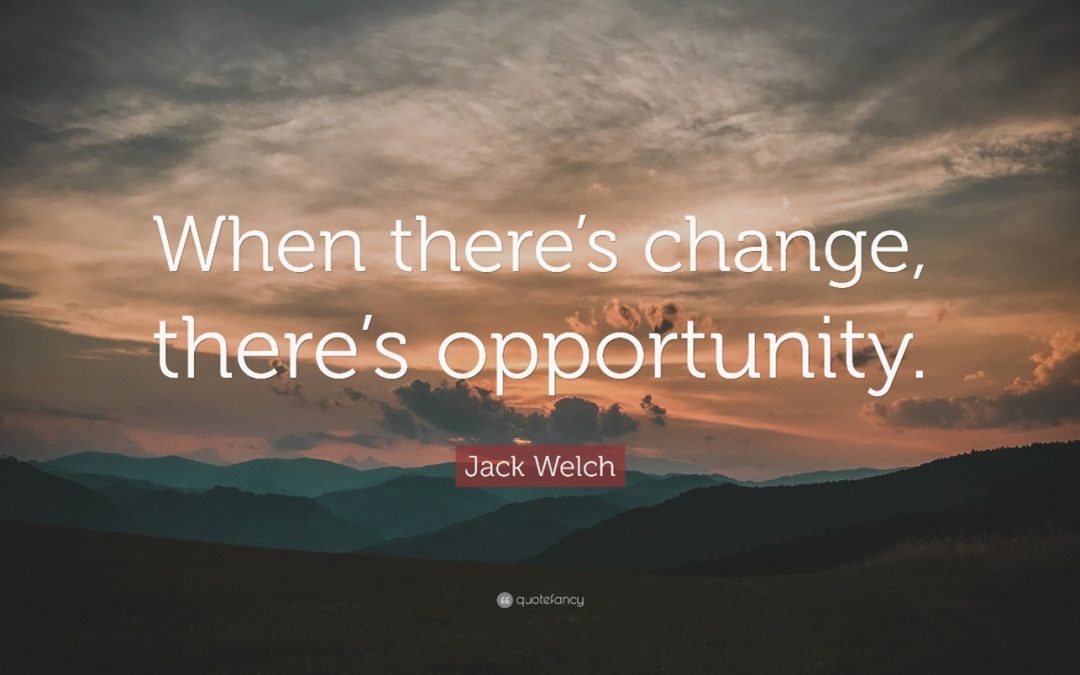
by Art Waskey | Aug 21, 2023 | Art of Sales Weekly, Featured
Professional sales reps need to pay attention to what is new, particularly as it relates to Artificial Intelligence (AI) and enterprise selling. It is time to take action with AI.
Artificial Intelligence
Artificial intelligence (AI) is already having an impact on the business world. According to Forbes, OpenAI, the company responsible for creating the chatbot ChatGPT, is now valued at $29 billion and has raised $11.3 billion in funding through seven rounds. Recently, Microsoft announced a significant investment in OpenAI to further advance AI innovation globally as part of their longstanding partnership.
Furthermore, I recently asked ChatGPT, “How will sales be affected by artificial intelligence?” Instantly, I received a 377-word response noting seven categories of change. How you manage these changes is critical. As Mike Marks of Indian River Consulting Group, says, “The one thing to ensure distributor success in 2024 is the ability to manage change, and to integrate your whole team into doing things differently.” There is no question that changes in the hybrid sales model known as enterprise selling, which is powered by digital data analysis, will accelerate in 2024.
Actions Needed
In conclusion, as digital transformation gains momentum, here are key actions salespeople need to consider.
- Continuing education – AI is moving at a fast pace but distributor sales have been slow to adopt it. You and your team must be constantly educating yourselves on emerging digital resources.
- The balancing act – Although digital transformation is fundamentally reshaping sales, salespeople must avoid depending on it too much. You need to establish a good balance between technology and personalization in your sales process.
- Using the new tech stack –Welcome the benefits of the digital transformation: not taking advantage of them only puts you further behind. Be willing to fold new resources into your sales process.
- Engaging the already informed buyer – With the changing sales landscape, reps must be ready to defend the company’s position diligently. AI helps you do this effectively.
Get tips and tricks like the above in The Art of Sales books. Or subscribe to the FREE monthly articles here.

by Art Waskey | Aug 13, 2023 | Art of Sales Weekly, Featured
We need to look for the opportunities often hidden within disruption. As author Barbara Kingsolver, says, “The changes we dread most may contain our salvation.”
Letting Go
Many great companies have been on the verge of extinction and recovered. Notable examples include Apple, Marvel, GM, AIG, IBM, Starbucks, Jack in the Box, Chrysler, and Lego. Among these, Apple stands out as the most remarkable case. Alyson Shontell’s article in Business Insider describes what she calls the “The Greatest Comeback Story of All Time”. In 1997, Apple was hemorrhaging $1 billion a year. Moreover, the media was predicting its demise. However, at the ’97 Macworld Expo, Steve Jobs humbly addressed the audience: “If we want to move forward and see Apple healthy and prospering again, we have to let go of a few things here. Specifically, we have to let go of this notion that for Apple to win, Microsoft has to lose.”
Finding the Opportunity
Steve Jobs wasn’t afraid to make difficult decisions to get the company back on track. He demonstrated to the world that you can adapt to change by finding opportunity within it. He and Bill Gates joined forces. They announced a five-year contract that would release an updated Mac version of Microsoft Office and Microsoft’s $150 million investment in Apple. In the end, both Jobs and Gates won!
Adapt to Circumstances
A wise businessman adapts to his circumstances. Lastly, the best leaders are continually developing a culture that enables people to find solutions to challenging situations. They embody active listening, attentiveness to ideas with an open mind, and the ability to respond without judgment or finality. Demonstrating understanding and respect is integral to their projection. Furthermore, they embrace lifelong learning, acknowledging the necessity of seeking chances for change.
Get tips and tricks like the above in The Art of Sales books. Or subscribe to the FREE monthly articles here.

by Art Waskey | Aug 8, 2023 | Art of Sales Weekly, Featured
Cultural Fragility
Each business has a unique culture and it can be fragile. Changes within and outside your organization can threaten the culture of your company. Firstly, a merger or acquisition may alter your existing cultural landscape. A respected leader may go astray, upsetting the company’s cultural trust. It is important, therefore, to be vigilant about building habits that maintain and protect your company’s cultural foundation.
Key Cultural Building Blocks
Here are three key ways to build a strong cultural foundation for your business.
- A humble heart – A truly self-assured leader doesn’t need a pat on the back. He needs to be humble. I live in Denver where a local sports superstar leads with a humble heart. The Denver Nuggets basketball team won a national championship this year. Nikola Jokic is their superstar yet consistently attributes his success to plays made by other team members. In his sincere and humble way, Jokic demonstrates that the Nuggets are a team, not a group led by one superstar.
- Personal accountability – Authentic leaders must assume responsibility for their decisions, including their failures. A leader does not inspire confidence if he demands that others take the fall when his idea fails. In the event of a merger or acquisition, a good leader doesn’t say (as I have heard many times), “Nothing is going to change.” A true leader empowers change by taking personal responsibility for necessary actions, even when there is the possibility that these will be unpopular.
- Aim for virtue – Pay attention to the moral positioning of your company’s leaders. Does it make them, and those around them, more courageous? Furthermore, a leader needs to be confident and resilient in the face of stress. She needs to be able to meet unexpected challenges and adjust quickly to change. People who aim high in the virtue department model their integrity for others in the workplace. This enables a company to build and maintain a strong cultural presence.
Build a Strong Cultural Foundation
People want to join a company with a clear mission that aligns with their idea of a strong cultural institution. Lastly, they want to be led by humble, accountable people and demonstrate strength of character. Your business will profit from building a solid cultural foundation.
Get tips and tricks like the above in The Art of Sales books. Or subscribe to the FREE monthly articles here.

by Art Waskey | Jul 25, 2023 | Art of Sales Weekly, Featured
Building customer loyalty in a business environment typified by rapid digital transformation and virtual online alternatives is challenging. Sales reps need to stay current on the skills required to recognize customers’ needs and buying habits. Additionally, an IBM report on the skills gap, in 2019 most business skills had a “half-life” of around five years. Tech skills remain relevant for only about two-and-a-half years.
Key Elements
With these statistics in mind, here are a couple of key elements to focus on when building customer loyalty.
- A culture of learning – Develop a culture of learning to speed your effort to understand why customers buy your products and services. Firstly, HubSpot offers hundreds of short courses. On Hootsuite, you can find a range of social media courses, training classes, and certifications. To differentiate yourself from your competitors, launch educational content materials for your customers. Second, Leverage content such as help articles, webinars, blogs, and other onboarding materials. Repurpose information in bite-sized lessons using different formats. Remember, any customer education must be grounded in own listening and learning.
- Understand technology – We are in an era of hybrid Enterprise Selling. Today, traditional relationship selling skills are being combined with the use of digital tools to maintain and build customer loyalty. According to Pluralsight, 85% of organizations are actively engaged in, or planning to launch, a digital transformation project in 2023. Research from McKinsey indicates that organizations achieve successful digital transformation initiatives only when they understand they need the requisite technology skills to sustain them. Without team members that continuously learn in order to stay ahead of the technology curve, digital transformation falls flat. Distribution companies must employ comprehensive ERPs, eCommerce platforms, and easy access to product and service information digitally. Alternatively, once your staff is trained, you need to make sure your customers are comfortable with any new technology.
The Digital Savvy Buyer
Lastly, today’s digital-savvy buyers expect more than a product or service. They look for selling partners who will provide business intelligence that will grow their bottom line. Furthermore, to build and maintain customer loyalty, businesses should actively foster a learning culture and offer comprehensive customer educational resources. Integrate these with the most up-to-date digital transformation initiatives. Companies can enhance their customer relationships effectively.
Get tips and tricks like the above in The Art of Sales books. Or subscribe to the FREE monthly articles here.

by Art Waskey | Jul 17, 2023 | Art of Sales Weekly, Featured
As customers, we look for vendors who provide stable and fair pricing. As sales reps, we know that pricing products consistently creates better customer retention. Certainly, today’s economic disruptors, like inflation, cause us to struggle to keep costs from rising and prices down. They can create price inconsistency. Making pricing a core competency of your business, therefore, is critical to success in a challenging business environment.
Data-driven Pricing
It is important to the effectiveness of your pricing strategy to use digital analysis tools. According to White Cup Solutions, a company that offers a Revenue Intelligence platform designed for the distribution industry, “Distributors who win won’t have one-size-fits-all pricing; they’ll have data-driven intelligent pricing practices to offer the right price to the right customer at the right time. Furthermore, knowledge is pricing power; they’ll put in place the ability to run what-if scenarios to predict market share, revenues, and margins at various price points.”
Be Proactive
Today’s business environment is punctuated by economic disruptors. Luckily, technology enables us to respond to these disruptors quickly and efficiently. Also, make sure your analytic tools are proactive and agile — not reactive and clumsy. Meanwhile, identify your greatest pricing opportunities and set strategic price targets by product and customer type. Then, ensure that your customer’s performance matches your pricing model. Integrate digital data-based pricing metrics to minimize inconsistencies created by the emotional side of your planning process. Be prepared for economic disruption with a strategic pricing plan that is built with digital tools.
Develop your core
Make pricing a core competency by soliciting cross-functional pricing communication support throughout your organization. Get rid of inefficient customer-specific pricing. Additionally, use digital analysis tools to respond to economic disruptors as they occur.
In conclusion, by making pricing a core competency and by using digital tools, you can build consistency in your business and enjoy higher rates of customer retention.
Get tips and tricks like the above in The Art of Sales books. Or subscribe to the FREE monthly articles here.





